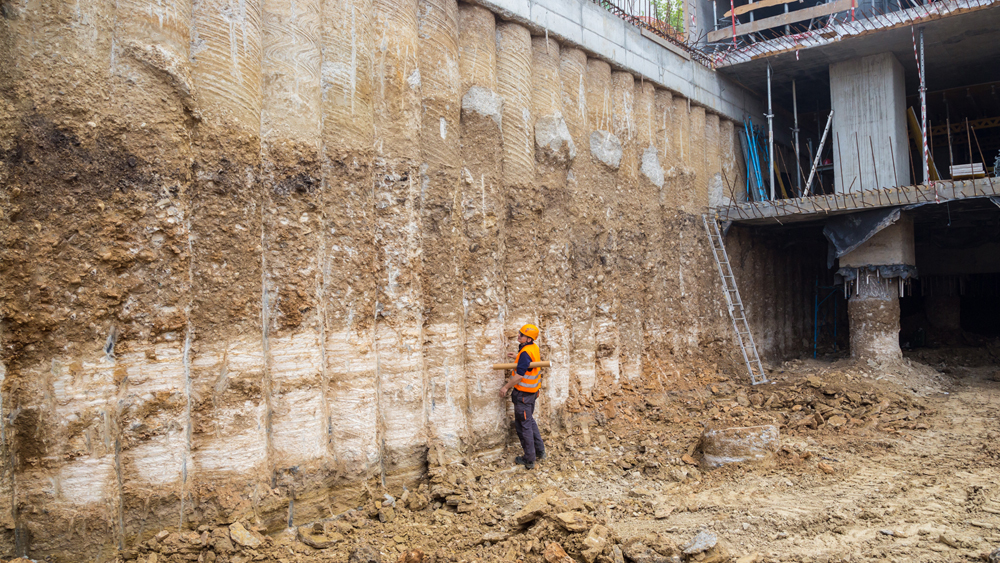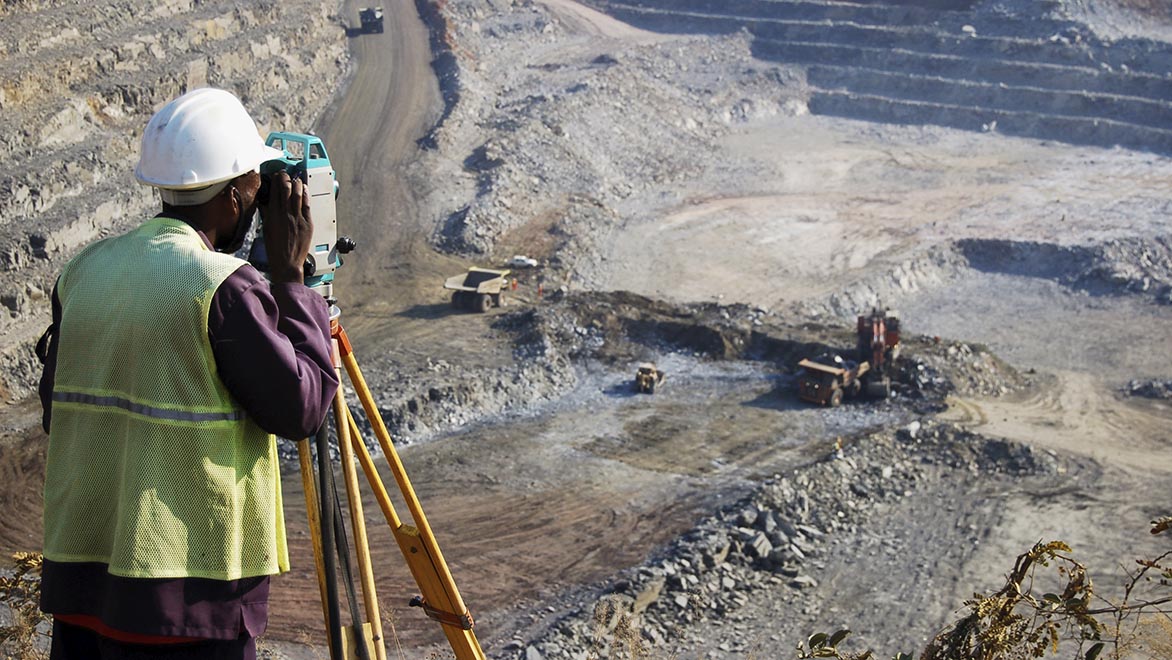Essential Top Qualities of Effective Civil Consulting Engineers
Essential Top Qualities of Effective Civil Consulting Engineers
Blog Article
A Detailed Overview of the Trick Obligations of Geotechnical Engineers in Site Characterization and Ground Enhancement Methods for Engineering Solutions
Geotechnical engineers are integral to the effective execution of engineering jobs, entrusted with the critical obligations of site characterization and the application of ground renovation techniques. Their job includes a detailed evaluation of subsurface conditions, employing various screening approaches to determine soil and rock properties.
Function of Geotechnical Designers
Geotechnical engineers play a critical duty in the style and building and construction of facilities by examining the habits of soil and rock under the surface area - civil consulting engineers. Their duties include assessing subsurface conditions to inform design decisions that ensure structural security and safety. By performing in-depth evaluations of dirt residential properties, including shear leaks in the structure, compressibility, and stamina, geotechnical engineers supply critical data that affects the selection of appropriate building materials and strategies
Along with assessing dirt technicians, geotechnical engineers are charged with recognizing potential threats such as landslides, sinkholes, and ground settlements. Their expertise assists mitigate risks related to these geotechnical sensations, consequently protecting both the setting and public safety and security. They also team up closely with other design techniques, making sure that geotechnical considerations are integrated into total job design.
Furthermore, geotechnical designers participate in the examination of existing frameworks, giving suggestions for retrofitting and repairs when needed. Their thorough understanding of soil-structure interaction is vital for the advancement of sustainable facilities options. On the whole, the role of geotechnical engineers is important to the successful understanding of building projects, guaranteeing they are risk-free, long lasting, and certified with regulatory criteria.

Website Characterization Processes
Reliable site characterization procedures are vital for understanding the subsurface problems that influence job design and implementation. Geotechnical engineers employ an organized technique to collect, assess, and analyze information relating to dirt, rock, and groundwater qualities. This procedure begins with a thorough evaluation of existing literature and archaeological site information, providing insights into previous site problems and prospective challenges.

Data evaluation complies with fieldwork, where designers utilize geostatistical techniques to interpret searchings for and develop geological designs. Through attentive site characterization, geotechnical engineers lay the groundwork for successful task implementation, reducing unexpected problems and enhancing resource allotment.
Dirt and Rock Screening Methods
While recognizing subsurface conditions is essential, the option of proper soil and rock testing approaches is just as necessary for exact evaluation and layout. Geotechnical designers use a selection of screening methods to assess the physical and mechanical buildings of soil and rock products.
Laboratory examinations, such as Atterberg limits, grain dimension evaluation, and unconfined compressive stamina tests, give vital information on soil habits under different moisture conditions and filling situations. These tests help identify dirt category and forecast negotiation or shear stamina qualities vital for foundation design.
In-situ testing approaches, consisting of Requirement Penetration Tests (SPT), Cone Penetration Tests (CPT), and pressure meter tests, permit engineers to gather information directly from the ground. These methods provide beneficial understandings into the soil's thickness, uniformity, and stratification without the need for considerable sampling.
Rock screening typically entails core tasting and laboratory analysis to analyze residential properties like uniaxial compressive strength like this and rock high quality classification (RQD) Together, these soil and rock testing methods enable geotechnical engineers to make enlightened decisions concerning site-specific obstacles, making sure the security and stability of design services.
Ground Improvement Methods
Ground enhancement techniques are important for enhancing the design buildings of soil, thus enhancing its load-bearing ability and reducing negotiation. These approaches are critical in attending to challenges offered by weak or bothersome dirts, which can significantly impact the stability and toughness of frameworks.
Numerous ground enhancement techniques are used, including compaction, grouting, and soil stabilization. Grouting, on the other hand, includes injecting a fluid material right into the ground to fill gaps and enhance dirt communication.
Soil stablizing incorporates a variety of methods, from chemical additives to mechanical treatments, targeted at improving the dirt's resistance to erosion and deformation. Strategies such as lime stabilization or cement blending change the residential or commercial properties of the soil at a bit level, boosting its total efficiency.
Significance of Geotechnical Evaluations
Geotechnical analyses play a critical role in the preparation and style of design jobs, as they offer essential details regarding the subsurface conditions. Recognizing soil homes, rock formations, groundwater degrees, and possible geohazards is essential for ensuring the security and security why not look here of structures. These evaluations make it possible for designers to make educated choices pertaining to website choice, design parameters, and building methodologies.
The relevance of geotechnical analyses extends past first task phases; they contribute in risk management and expense efficiency. By identifying possible concerns early, such as dirt settlement, slope instability, or extreme groundwater, engineers can develop ideal mitigation methods, reducing the likelihood of pricey hold-ups and structural failures. Moreover, these evaluations support compliance with regulative demands and enhance the sustainability of engineering practices.

Verdict
To conclude, geotechnical designers are crucial to making certain the safety and stability of design jobs through comprehensive site characterization and ground enhancement methods. geo tech engineering. Their methodical technique to examining subsurface problems, combined with their suggestions for effective ground adjustment, considerably boosts soil homes and load-bearing capacity. The knowledge of geotechnical designers not just helps with educated task planning however additionally makes sure conformity with guidelines and fosters efficient communication among stakeholders, eventually contributing check my reference to successful engineering results
Geotechnical designers play a pivotal function in the style and construction of facilities by assessing the habits of dirt and rock under the surface. By performing comprehensive evaluations of dirt buildings, including shear stamina, leaks in the structure, and compressibility, geotechnical engineers supply crucial data that influences the choice of proper construction materials and strategies.
In enhancement to evaluating dirt technicians, geotechnical designers are charged with recognizing prospective hazards such as landslides, sinkholes, and ground settlements. Geotechnical engineers utilize a methodical method to gather, review, and interpret data regarding groundwater, rock, and dirt qualities. By determining potential problems early, such as soil negotiation, incline instability, or excessive groundwater, designers can design ideal reduction strategies, lowering the possibility of costly hold-ups and structural failings.
Report this page